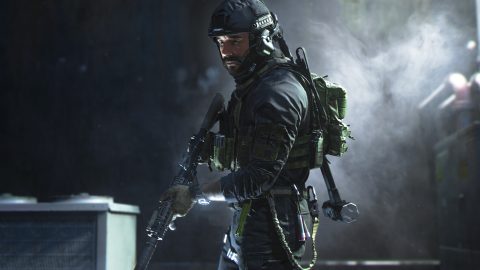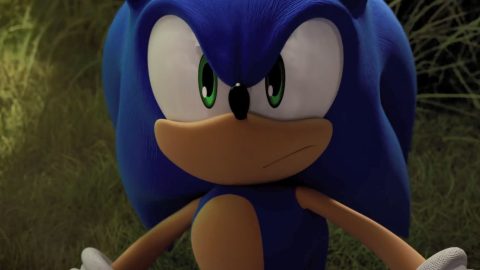
Rock The Spacebar is a twice-monthly column investigating the great music that underpins your favourite games. This week, Dom Peppiatt looks back on a PlayStation juggernaut – Spyro the Dragon – and reflects on how an unlikely video game for children kickstarted a love for one of Britain’s most infamous new wave exports.
My parents weren’t exactly into The Police. My dad’s taste in music was either much more CBGB – anything sweaty, coated in spit, rallying against whatever there was to be rallied against – or tended towards to morose laments of Ian Curtis and the incessant basslines of Peter Hook. My mum was more into Northern Soul and disco, peeling off occasionally for some reggae or pop. The Police – with their new wave sensibilities and nigh-incomprehensible lyrical babbling – weren’t really on their radar.
So how did a young, greasy-haired greebo (that’s 2004 for ‘kid that’s into metal’) get into a band that wrapped up all its loose ends and took its last breath almost two decades earlier? As it happens, it was through Spyro the Dragon.
Little did I know – the first time I booted up the game and heard that hypnotic, enticing track that welcomes you to Spyro’s world – that the drummer of The Police was behind more or less every bar of music you heard in the game. As you see Spyro soar through the air, a little purple dragon offset against a teal sky, with castles and clouds and peculiar creatures cutting about in meadows and across oceans, you hear these small orchestral teases – tiny little swells of something grand and majestic, breadcrumbing you into what’s to come.

I had no idea that Stewart Copeland, the drummer from some old band I’d seen CDs of on shelves in Woolworths, had squirreled himself away in a small Hollywood studio, playing the game as it was being developed and wrestling with some ugly 90s audio software to give birth to one of the most magical and endearing game soundtracks that have ever been made.
His process – even back in the 90s – was noteworthy. He’d always beat the level first (“figuring out the jumping” was always the hard bit, apparently) before sketching ideas down and creating “a general attitude” for any given level. Once beaten, and immersed in an aural landscape, he’d dive back into the track and pull out intricacies and complexities and work on them – spooling out themes, sounds, motifs, and ideas and layering them in to create something altogether more… magical.
“I wanted to create sub-layers,” he once noted in an interview, “I wanted to create sounds and layers that don’t hit you the first time, but hit you the sixteenth time. I want it to survive repeated listenings.” So, in the middle of levels riffing on world music – from Himalayan chants to percussive African-inspired beats – you’ll hear a very faint, almost imperceptible refrain come and go for a few bars.
It’s present enough to become an earworm and burrow into your brain, but not loud enough for you to know where, exactly, you heard it. In a game that encourages you to return to levels ad infinitum until you’ve got all the collectibles and uncovered all the secrets, it’s aural catnip. It is game sound design, perfected.
It’s prog, to my ears. Or, at least, it uses elements of prog. But then, so did The Police – so it’s not really a departure for Copeland, in that regard. Ever the drummer, Copeland’s process for knitting the Spyro music together usually revolved around laying down a few bars of percussion, then looping them as he tinkered with more melodic elements. But listen to any of the tracks – especially the iconic intro theme to the game, the one that holds your hand and shows you this brightly-coloured, inoffensive fantasy world – and you’ll be drawn along on a current of drums, more than anything else.
Despite these tracks coming together like suites of music you’d hear in something from an ELO record – or during the breakdown of a particularly egregious Rush track – there was nothing other than Copeland, his maestro fingers, and a Kurzweil K2500x keyboard loaded with orchestral samples and effects. Full scores, entire movements of music, created and concocted on a keyboard and an old 90s CRT monitor. You’d be forgiven for thinking it was penned on parchment, with a quill, such are the rapturous, rambunctious creations.
In an old interview with PlayStation Underground (embedded below), you can watch Copeland seamlessly weave bass lines, drum beats, and synth stings together as he figures out the atmosphere of a level – grinning to himself all the while. “They pay me for this,” he smirks, a knowing look to the camera. That passion – that unironic love of what he does – translates wholesale into the game. You can hear it, in every bar. It’s jubilant.
The music of Spyro the Dragon is a bit of a departure from the music he did in other parts of his illustrious, Hollywood career – Highlander 2, Rumblefish, Wall Street… and Spyro the Drgaon? It doesn’t fit, right? Except… it does. Copeland’s work has always had an edge of the progressive and experimental to it; there are those that would argue The Police are post-punk, that they plucked at the edges of what was acceptable mainstream drudgery with their weird take on love songs and dubious odes to stalking. Reggae-tinged, new wave experiments that cracked charts in Europe and across the pond? As a kid listening back to all that, after playing Spyro, it kind-of made sense.
And it’s clear Copeland is proud of the music he wrote for Spyro the Dragon, too – motifs, themes and little melodies you’ll hear in the wondrous and wacky Spyro universe have since made it into other projects of his. Check out the themes to The Amanda Show, Look Up, or Louis Hansa, and you’ll no doubt hear inflections of the Spyro fantasy rear their dreamy, psychedelic heads. All you need is the panning noise of a gem-snatching Dragonfly played over the top and the illusion will be complete.

Spyro is but one of the few PlayStation series that became known for its boundary-pushing music. Final Fantasy, Tekken, Oddworld, Crash Bandicoot, Wipeout… the list goes on. Copeland – back in the 90s – gave a suggestion as to why this may be the case; why so many composers were so inspired by this little, unlikely grey box.
“The Sony PlayStation has room for high-quality music that has full bandwidth, the same as you get from a CD,” he says in the aforementioned interview. “The other platforms have a smaller bandwidth, and that bandwidth puts an imposition on the composer where they have to create sounds that fit within that. CD-ROM games have so much space, and I can get full symphonic sounds in there.”
Copeland clearly took the room he had to maneuver to heart. Dancing effortlessly between the grandiose, the majestic, the fantastical, and the danger, the jeopardy and the threat, Spyro’s soundtrack – 25 years later – remains a bastion of video game music, and an absolutely integral part of gaming history.
And, better than all that, it helped some crusty little teenage metalhead expand his horizons and figure out that there’s more to life than just Iron Maiden and Thin Lizzy.
Spyro: Reignited Trilogy was released in 2018 and is available now on PlayStation, Xbox, Nintendo Switch, and PC.
The post ‘Spyro the Dragon’, PlayStation, and The Police: The unlikely story behind a PlayStation classic appeared first on NME.






